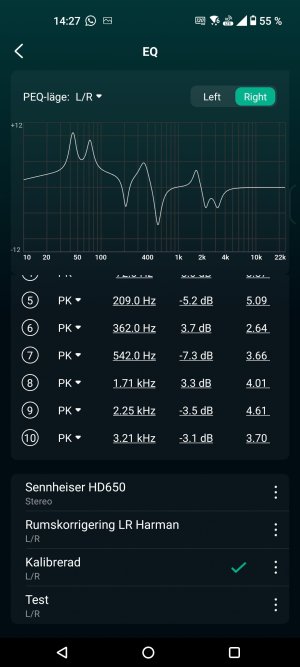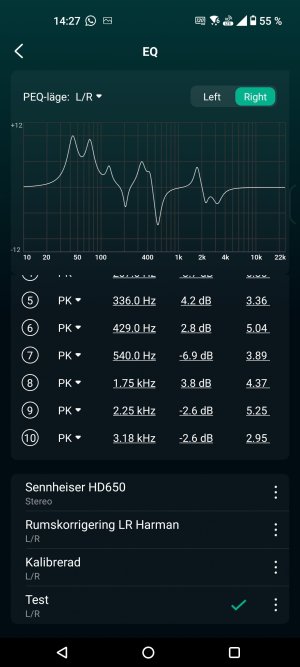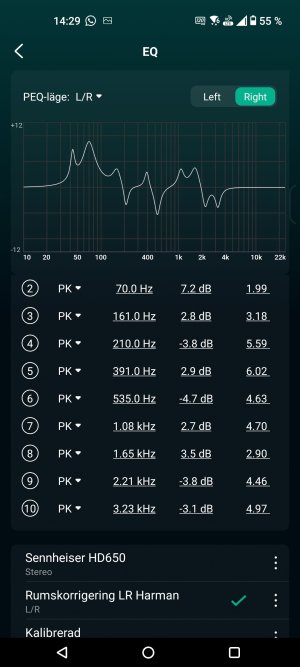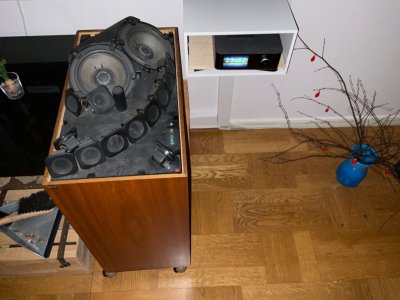I have a pair of rather unusual speakers that are quite obscure outside of Sweden. They are Carlsson speakers, designed with all drivers pointing upwards to create an omnidirectional sound effect.
About a meter diagonally above the right speaker, there is a wall-mounted bookshelf, and about a meter to the side, there is a storage unit. The left speaker, on the other hand, has completely free space both above and to the side.
Far from optimal which if why I think room correction seem to help quite a bit. When we move I hope to get a more optimal placement for both speakers and hopefully it can work without room correction. I'll include pictures with and without the grille so you can get a better idea.




